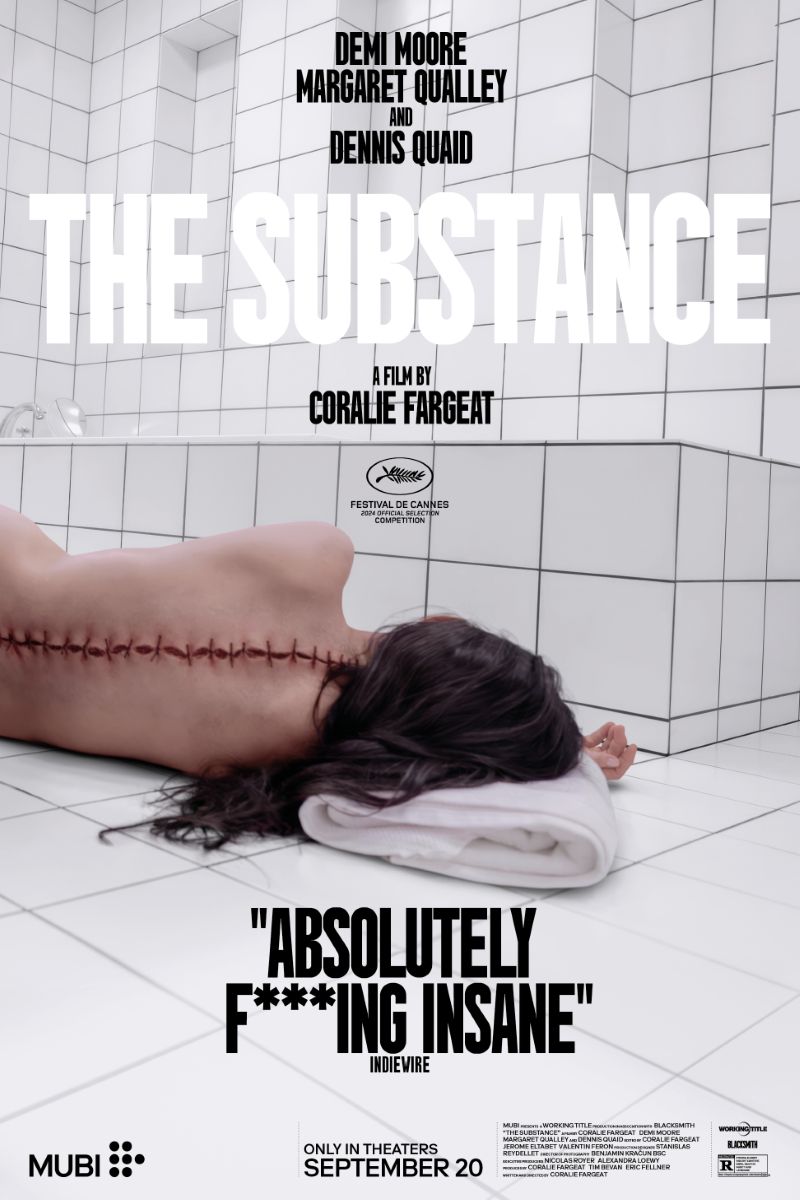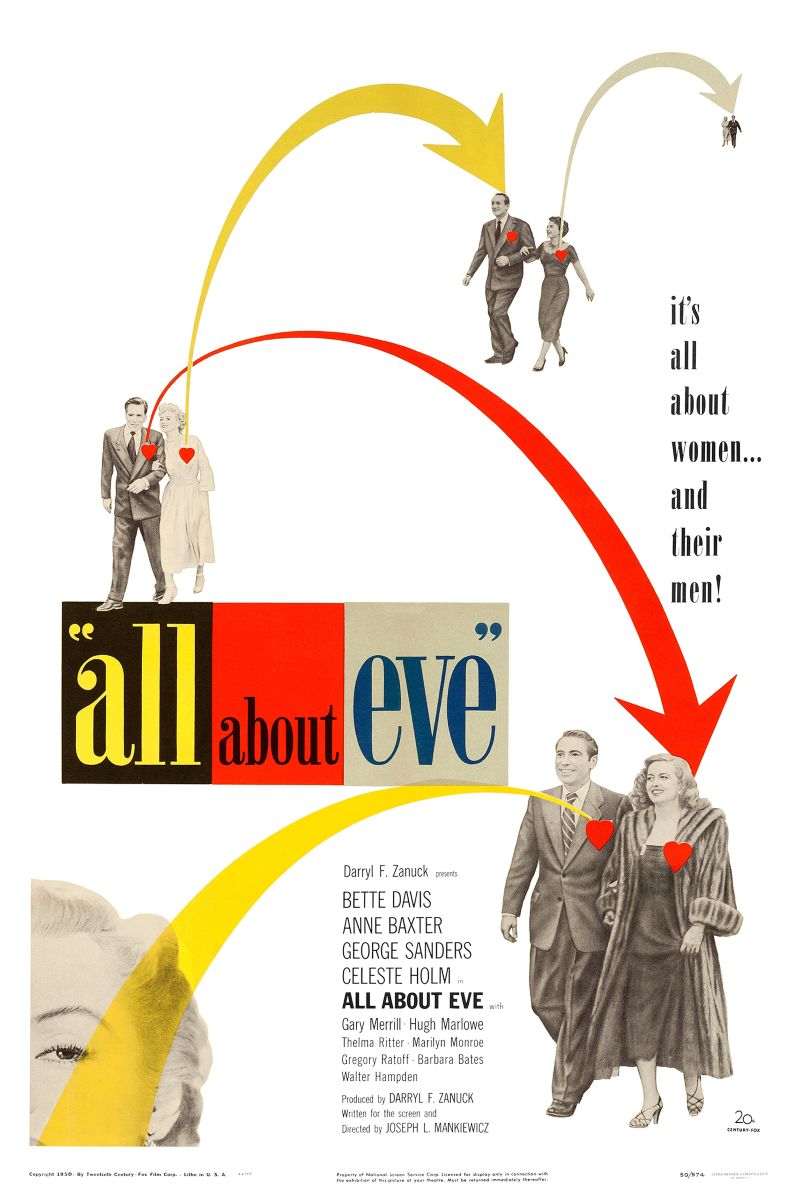
The Substance
The Substance
A body horror film directed by Coralie Fargeat, starring Demi Moore and Margaret Qualley. Following washed-up actress Elisabeth who, after being fired due to ageism, uses a mysterious drug to create a younger, perfect version of herself. Through extreme body horror aesthetics, the film deeply explores crucial issues including ageism, beauty standards, body politics, female self-hatred, and patriarchal control over women's bodies, becoming a representative work of contemporary feminist horror cinema.
Cast
Related Topics
🎥 Film Analysis & Review
The Substance represents French director Coralie Fargeat’s ambitious achievement, a body horror masterpiece that won the Best Screenplay award at the Cannes Film Festival, establishing itself as an important milestone in contemporary feminist horror cinema through extreme visual impact and profound social critique. Demi Moore’s Elisabeth Sparkle and Margaret Qualley’s Sue, sharing the same body yet representing different age groups of women, cleverly symbolize the age anxiety and beauty pressure that patriarchal society imposes on women, revealing how women lose themselves, fragment their identities, and ultimately move toward self-destruction in pursuing youth and perfection.
From a media representation critique perspective, The Substance’s sharpest insight lies in its ruthless exposure of ageism and gender bias in the entertainment industry. Elisabeth, as an actress in her 50s, is fired by ruthless producer Harvey (Dennis Quaid) solely because of her age, reflecting Hollywood’s and the entire entertainment industry’s systematic exclusion of middle-aged women. The film demonstrates how media constructs and reinforces youthful beauty standards to devalue and marginalize older women, treating them as “expired goods” no longer possessing commercial value. This presentation directly addresses contemporary society’s fear and stigmatization of female aging.
Demi Moore’s performance represents the pinnacle of her career, courageously demonstrating middle-aged women’s vulnerability, anger, and despair when facing ageism. Moore unreservedly presents Elisabeth’s body anxiety, self-doubt, and pathological desire for youth; this uncompromising performance serves not only as profound character interpretation but powerful indictment of Hollywood’s ageism. Her performance avoids victim stereotypes, instead showing a complex, authentic woman’s psychological struggle under social pressure.
Margaret Qualley’s Sue represents contemporary society’s idealized female image: young, beautiful, flawless. However, through Sue’s character, the film reveals this perfect image’s illusory and destructive nature. Although Sue possesses a perfect body, she lacks genuine emotions and life experiences, existing as pure appearance. Her conflict with Elisabeth symbolizes women’s internal tearing: the painful choice between society’s expected perfect image and authentic self.
Coralie Fargeat’s directorial approach pushes body horror to extremes, using shocking special effects and visual design to represent women’s body distortion and deformation under social pressure. The choice to use extensive practical effects rather than digital effects enhances visual impact’s authenticity, allowing audiences to more directly experience characters’ pain and horror. This extreme aesthetic expression isn’t for curiosity’s sake but to amplify and materialize the body pressure women endure in patriarchal society.
From a body politics perspective, the film profoundly explores how women’s bodies become objects of social control and commercial exploitation. “The Substance” drug symbolizes contemporary beauty industry, plastic surgery, and anti-aging products’ commercial manipulation of women’s bodies. Women are taught to believe their natural bodies are insufficient and need transformation, trapping them in endless self-modification cycles. The film reveals the commercial logic and power relationships behind such body transformation.
The film’s attention to women’s mental health is particularly profound. Elisabeth’s identity fragmentation isn’t merely science fiction setting but extreme manifestation of psychological splitting women commonly experience in patriarchal society. Many women face tearing between authentic self and social expectations; this internal conflict often leads to self-hatred, body anxiety, and psychological trauma. The film makes this psychological pain visible and tangible through extreme visualization.
The film’s critique of capitalist consumer culture is also sharp. The beauty industry creates market demand by manufacturing women’s body anxiety, linking women’s self-worth to appearance to gain enormous profits. “The Substance” as commodity promises women the perfection they desire but ultimately brings only greater pain and destruction. This critique reveals how capitalism achieves economic exploitation through manipulating women’s body consciousness.
The film’s time concept is also important. The “seven days” cycle rule symbolizes modern society’s compulsive pursuit of time and efficiency. Women are required to maintain youth and beauty within limited time; this temporal pressure exacerbates their anxiety and despair. The film shows what catastrophic consequences occur when this balance breaks.
From a feminist psychology perspective, the film explores how internalized misogyny leads to women’s self-attack. Elisabeth’s jealousy and hatred toward Sue actually represent nostalgia for her younger years and disgust with her current aging body. This self-splitting reflects how women, under patriarchal culture’s influence, internalize society’s ageism as self-hatred.
The film’s visual design is full of symbolic meaning. Bright neon colors and surreal spatial design create an aesthetic atmosphere that’s both alluring and terrifying. This visual style reflects consumer culture’s allure and danger. Particularly scenes showing body deformation and decomposition, though extremely horrific, represent the most direct expression of pain women’s bodies endure under social pressure.
The film’s critique of competitive culture is also profound. The conflict between Elisabeth and Sue represents not only personal level but competitive relationships among women based on age and beauty. This competition is deliberately manufactured by patriarchal society to prevent women from uniting against unjust systems. The film shows how such competition ultimately harms all participants.
From the horror film genre perspective, The Substance inherits and develops body horror traditions, particularly works by directors like David Cronenberg. But Fargeat combines this genre with clear feminist stance, making horror no longer merely sensory stimulation but powerful tool for social critique. This combination infuses horror films with new political significance and artistic value.
The film’s ending, though extremely bloody, carries profound symbolic meaning. The final monster image represents women’s complete alienation and self-destruction in pursuing perfection. This ending serves both as exaggerated reflection of reality and warning of possible future: if society continues treating women’s bodies and age so cruelly, the ultimate result can only be destruction.
The film’s attitude toward technology and cosmetic medicine is also complex. “The Substance,” though science fiction setting, clearly alludes to real-world cosmetic surgery, anti-aging treatments, and various body modification technologies. The film questions motivations and consequences behind these technologies, reminding us that technological progress doesn’t necessarily bring human liberation but sometimes may deepen oppression.
From a feminist film theory perspective, the film demonstrates how horror can serve as a vehicle for exploring women’s relationship with their own bodies and society’s expectations. The grotesque transformations become metaphors for the psychological violence inflicted on women who internalize impossible beauty standards.
The film’s exploration of performance and authenticity is central to its themes. Both Elisabeth and Sue are performers in different senses—one literally an actress, the other performing ideal femininity. This layering of performance raises questions about which version of femininity, if any, represents the “authentic” self.
The use of color and space creates a hyper-stylized world that feels both familiar and alien. The clinical, sterile environments contrast with the organic horror of bodily transformation, emphasizing the artificial nature of beauty standards and the violence required to maintain them.
The film’s treatment of aging as horror reflects and critiques societal attitudes that equate women’s aging with loss of value. By literalizing this metaphor through body horror, Fargeat exposes the absurdity and cruelty of such thinking.
Ultimately, The Substance’s value lies in its courageous challenge to contemporary beauty standards and ageism and powerful defense of women’s bodily autonomy. Through Elisabeth’s tragic story, the film demonstrates how patriarchal society achieves control over women through manipulating their body consciousness and the enormous harm this control causes to women’s psychological and physical health. It reminds us that true beauty and value shouldn’t be defined by age and appearance, nor should women’s dignity and rights be damaged due to aging. In a world still full of ageism and appearance anxiety, this film provides powerful cultural weapons for reflecting on and changing these unjust standards. Through this masterpiece, Coralie Fargeat proves horror films’ enormous potential as tools for social critique while opening new paths for feminist cinema development.
🏆 Awards & Recognition
- • Cannes Film Festival Best Screenplay
- • Cannes Film Festival Palme d'Or Nomination
- • Toronto International Film Festival People's Choice Award
- • British Independent Film Award Best Director Nomination
⭐ Ratings & Links
Related Recommendations
Comments & Discussion
Discuss this video with other viewers
Join the Discussion
Discuss this video with other viewers
Loading comments...



